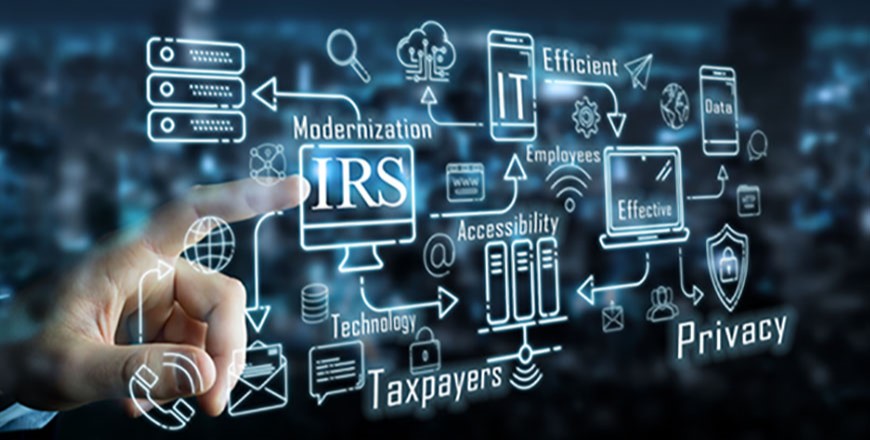Get a closer look at how, during the COVID-19 crisis last year, the IRS technology organization built and launched the new Documentation Upload Tool in less than 20 days.
Get to know the IRS, its people and the issues that affect taxpayers
By Nancy A. Sieger
CL-21-25, August 26, 2021
As Chief Information Officer, I’m focused on modernizing the services we provide the public, protecting taxpayer data, and using technology to make the IRS more accessible, efficient, and effective. We have incredible talent in the IRS technology organization, with no shortage of ideas. Here’s the story of how one such idea turned into the Documentation Upload Tool that totally transformed what it’s like interacting with the IRS for thousands of taxpayers.
One of my goals as the CIO is to pursue new and innovative ways of delivering technology such as providing our customers with new capabilities before they know they need them. The introduction of the Documentation Upload Tool at www.irs.gov/reply is a great example.
As we faced the national crisis last year with COVID-19, innovations that might have taken months or even years to take hold seemed to happen almost overnight. Our employees were dealing with a growing backlog of paper, and we knew we could help ease the frustration of taxpayers who had no option for submitting documentation to the IRS online.
If you can take a picture of a paper check and make a mobile deposit with your bank, why can’t you do something similar with the IRS? We knew we could quickly create a secure digital mailroom and from there, we took off.
Progress over perfection
With a shared goal and excitement about moving this project forward, we rallied teams together from across the IRS and in less than 20 days, delivered the “minimum viable product” as it’s known in technology circles. That means delivering an initial set of capabilities that we can build upon over time. The beauty of working this way is that we move fast and bring immediate value to our customers. Ultimately, you’re going for progress over perfection, knowing that you can add functionality and adjust over time.
In this case, we brought the technology to our IRS partners working on the front lines with taxpayers for the first use case: the automated questionable credit (AQC) program. All AQC cases are issued a Letter 4800C, Questionable Credit 30 Day Contact Letter, informing the taxpayer of the proposed deficiency or disallowing a claim for a refund or a credit. If the taxpayer does not respond to this letter, then a Letter 3219C, Statutory Notice of Deficiency, is issued after the suspense period expires. So far this year, we’ve mailed more than 43,000 of these letters so you can imagine the mountain of paper this program generates.
The Documentation Upload Tool is a new way to help taxpayers more efficiently submit documentation to substantiate their claim. Depending on the situation, the acceptable types of documentation may include copies of pay statements or check stubs. You take a picture of your documentation and the Documentation Upload Tool enables you to upload the image. And just like that, the IRS can access the data and continue working the case. The data is systematically entered into a database that the tax examiner can view and access in near real-time.
For anyone who’s experienced the hurry-up-and-wait of corresponding through the mail, this new service is a dramatic improvement. You have near-instant confirmation that your documentation was received, and by reducing the inventory of paper correspondence, the IRS saves thousands of hours traditionally spent opening, sorting, scanning and filing paper.
What’s more, we built the tool within our Integrated Enterprise Portal, which is the cloud-based platform we use for the official IRS.gov website and other major applications such as Where’s My Refund and Get Transcript. By hosting in the cloud infrastructure, we have another digital service that’s fast, reliable and scalable. We can – and will – add features, expand to other use cases and customize the interface over time. Already we’ve got two additional programs using the tool with customized interfaces for each.
Since the start of implementing the IRS Integrated Modernization Business Plan, we have taken one groundbreaking step after another to improve taxpayer service and take on new responsibilities.
The story of how we built and launched this tool in less than 20 days highlights the talent and ingenuity of our technology teams at the IRS. We’re constantly bringing in new ideas for how to make the technological innovations we experience at home and in the private sector available to taxpayers. Not every project can work at this speed but when we can, we do. With the right resources on board, we can continue to update our systems, adapt to the changing tech landscape and provide taxpayers with the 21st century service they need and deserve.
Changing the way we work
If you wanted to pick the time our collective mindset changed at the IRS, you might land on March 2020 when COVID-19 was dramatically changing the American landscape. We were called to provide nationwide economic relief while continuing to fulfill our routine responsibilities of tax administration. It was the first in a cascading series of events that fundamentally changed the way we work. We found ways to maintain mission critical operations and accelerate the expansion of digital services.
Tax administration is a dynamic, complicated environment. Since the start of implementing the IRS Integrated Modernization Business Plan, we have taken one groundbreaking step after another to improve taxpayer service and take on new responsibilities. Our technology organization is one of the biggest in government, which you might expect based on the scope of IRS operations. We have a team of about 7,500 technology professionals including system architects, developers, IT specialists, cybersecurity experts and solution engineers. Our infrastructure includes IRS contact centers, which average 2 to 3 million calls each day during a typical filing season, over 5,600 physical servers and other hardware, more than 110,000 laptops, printers and fax machines, over 12,500 network devices, and two massive computing centers.
Our team is excited about what they delivered with this first iteration of the Documentation Upload Tool, and there’s more to come. I often tell our new employees that one of the best things about working at the IRS is the freedom to bring innovative ideas to the table. Even better? Once implemented, those ideas can help millions of Americans. There aren’t many places that provide the opportunity to have such widespread impact.
Nancy A. Sieger
IRS Chief Information Officer
About the author
Nancy Sieger is the IRS Chief Information Officer responsible for operating and modernizing one of the most complex technology environments in government. Nancy leads the IRS in delivering the Integrated Modernization Business Plan, which includes dozens of initiatives to enhance taxpayer service and enforcement activities. Nancy helped rapidly transform IRS operations during the 2020 pandemic by accelerating the availability of new technology options for employees and taxpayers. She also led the agency’s technology work to implement the Tax Cuts and Jobs Act of 2017, one of the most significant tax reform laws in over 30 years.
Here's What You Can Do with IRS Online Account YouTube Video
A Closer Look
Read all our posts about a variety of timely issues of interest to taxpayers and the tax community
Subscribe
The IRS offers several e-News subscriptions on a variety of tax topics. Subscribe to get email alerts when new content is posted.

 )
or https:// means you've safely connected to the .gov website. Share sensitive information only on official, secure websites.
)
or https:// means you've safely connected to the .gov website. Share sensitive information only on official, secure websites.



